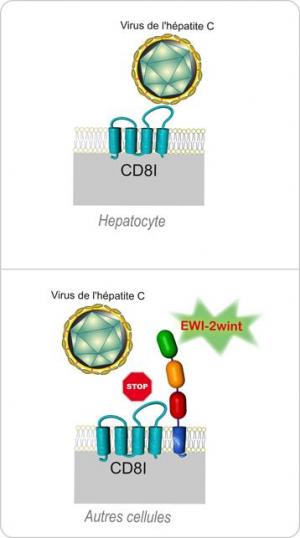
Hepatitis is a term used to refer to inflammation of the liver.
There are many different causes of hepatitis, including alcohol use, diseases of the immune system and certain medications. Hepatitis is also caused by a number of viruses. Among the most common of these in the United States is hepatitis C infection.
Hepatitis C is transmitted by blood and blood products. Before the routine screening of the U.S. blood supply in 1992, transmission was associated with transfusion. Fortunately, with universal screening of donated blood, this is no longer a significant source of transmission of the illness. Commonly, hepatitis C virus is transmitted through contaminated needles and other equipment used during the injection of illicit drugs.
Transmission of hepatitis C may also occur when an infant is born to an infected mother. this is fairly uncommon, with only 4 percent of children of infected mothers contracting the illness. Transmission has been reported in health-care workers exposed through a needle-stick injury from a contaminated source.
Sexual contact is not a common source of transmission but has been occasionally reported. there have been rare reports of transmission after contact with contaminated household items such as razors or toothbrushes. Household transmission also rarely occurs with direct contact between contaminated material and an open wound.
Tattoos and piercing with unsterilized instruments may pose a risk of transmission of the virus, though this has not been a reported source of transmission at commercial licensed tattoo facilities that routinely sterilize equipment.
It is estimated that more than 3 million Americans are infected with hepatitis C virus, with new cases likely totaling 15,000 to 20,000 per year. yet, for most who have this infection, the diagnosis remains hidden because many are not aware of their infection.
Hepatitis C often produces no acute symptoms. less than 20 percent of infected individuals develop a nonspecific flu-like illness within the first six months of exposure. Symptoms may include fever, tiredness, aches, nausea and ? less commonly ? jaundice (yellow skin discoloration).
Unfortunately, most people who contract hepatitis C infection develop chronic infection. For many, the chronic infection is mild, yet for some it can lead to serious complications including the development of cirrhosis and liver failure over time. The progression of the illness from infection to symptomatic liver disease may occur over many years. The risk of progression is accelerated when sufferers of chronic hepatitis C infection have other co-existing causes of liver injury, with alcohol use being most notable.
Unlike certain other hepatitis viruses, there is no vaccine currently available to prevent hepatitis C. However, some treatments are available. because infection often produces no early symptoms, screening of high-risk people is essential to minimizing risk of death and disability from the illness. this is done through treatment in select people and further risk-factor avoidance in those with chronic infection.
Current and past injected-drug users, those who received blood products before 1992, children born to hepatitis C infected mothers, those exposed to contaminated tattoo or piercing equipment, and people infected with HIV should all seek testing for hepatitis C.
Dr. Matthew A. Clark is a board-certified physician in internal medicine and pediatrics practicing at the Ute Mountain Health Center in Towaoc.